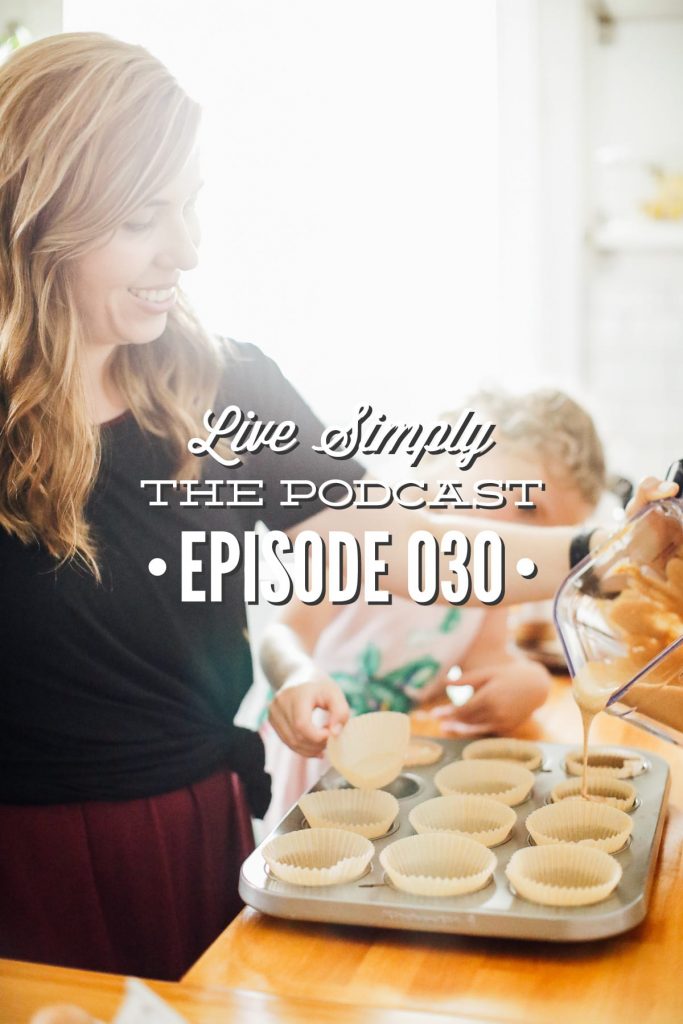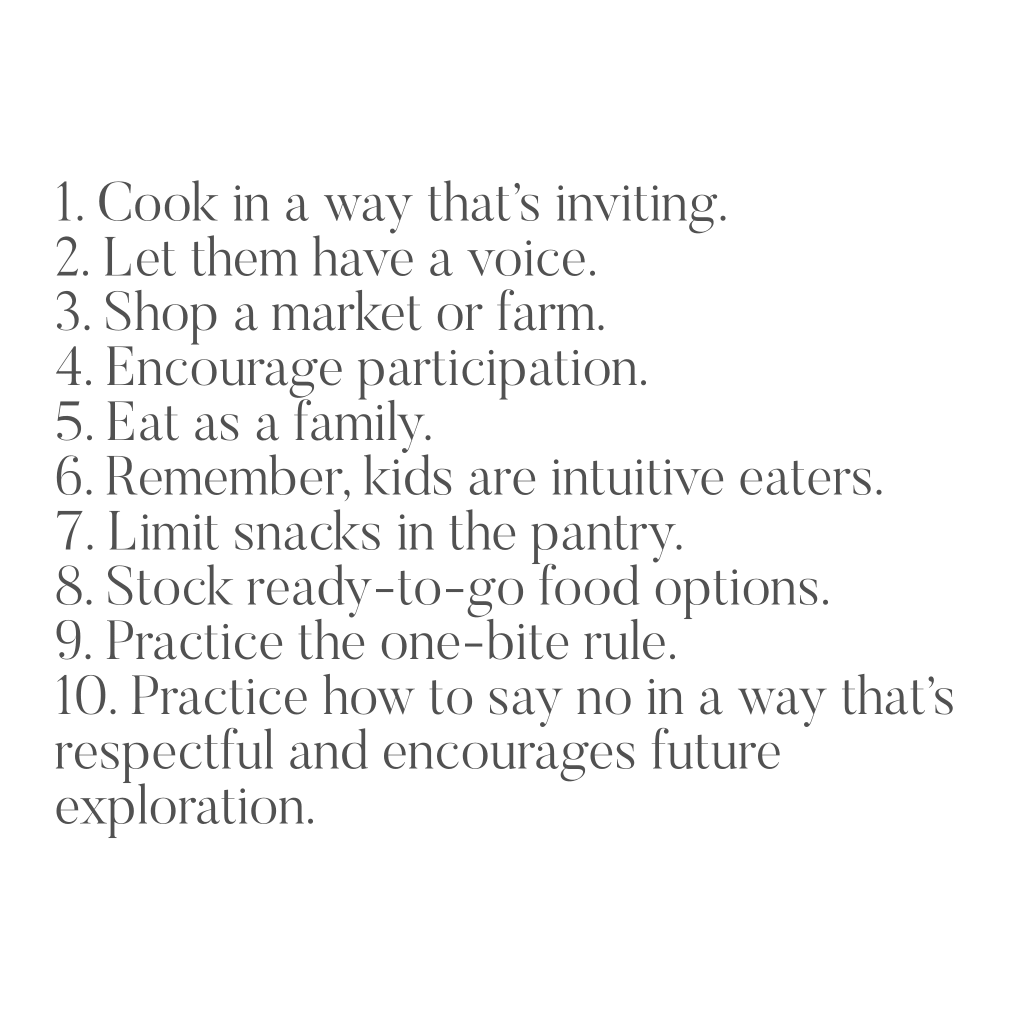In today’s episode, I’m sharing 10 tips to encourage a healthy food culture in your home and, ultimately, how to avoid a power struggle with your kids over food.

Want to Save This Article?
Enter your email & I’ll send it straight to your inbox. And you’ll get new recipes & tips each week.
Listen To The Podcast
Listen On iTunesListen On Stitcher Listen On Spotify
Show Notes
Resources Mentioned In Today's EpisodeLast week, we talked about how to get kids excited about trying new foods with Jennifer Tyler Lee.
As a follow-up, today, we’re going to dive into the topic of how to avoid a power struggle with your kids when it comes to food. I touched on this subject on Instagram a few weeks ago. I shared how we handle it when our kids refuse to eat something at the table. This topic resonated with so many folks on Instagram that I knew it would make for a great podcast chat.
Food should be something that brings your family together, not something that tears your family apart. Food is meant to be celebrated and enjoyed–the delight of fresh tomatoes in season and the enjoyment of a well prepared meal. It should be something our children associate with good memories. I believe we create, display, and build this culture culture within our homes.
Show Notes
Resources Mentioned In Today's Episode- Live Simply, The Podcast: Getting Kids Excited About Trying New Foods with Jennifer Tyler Lee
- Curious Chef Kid-Friendly Knives
- My Pantry Tour Video
1. Learn to cook in a way that’s inviting and flavorful. There are multiple ways to serve veggies, and you don’t have to even hide them in a super creative way. Just experiment with different ways to prepare them.
2. Let them use their voice. Give kids money to pick out something from the market, ask them to choose something to make from a cookbook. Ask your kids what they would like for dinner this week or in their lunchbox. Make them feel part of the food culture in your home.
3. Shop a market or farm. A market or farmers’ market will provide your children with hands-on food experiences.
4. Encourage participation. Ask your kids to help in the kitchen. We’re going to talk about this in a future episode with Katie from Kitchen Stewardship.
5. Eat as a family. Model, model, model. And don’t serve separate meals to kids.
6. Remember, kids are intuitive eaters. There are going to be times when kids gravitate more towards certain foods (like butter and fats) than other foods. Just keep serving real food.
7. Limit the processed food options in the pantry.
8. Be prepared with real and ready-to-go options in the fridge. Cut carrots, apples, bananas, eggs, muffins. You don’t need to go overboard. Just a couple of options for the week.
9. Encourage the one-bite rule. And model this.
10. Learn to say no in a way that encourages future exploration and doesn’t insult the maker. “It’s not for me right now.”
Even with these strategies, kids may not want to eat a food or meal. It happens in our home. Just the other day, I made a meal consisting of lamb meatballs, quinoa, and a salad.
Londyn only wanted to eat the meatballs. Piper only wanted the quinoa. And Londyn even went on to complain, “Why didn’t you make anything I like?” When this happens here’s how we usually handle it without making food into a power struggle…
- Meals are made from components. There’s always a choice within those components. Meatballs, quinoa, salad.
- If they decide not to eat, and later they complain about being hungry, our first response is, “Sorry, we had a delicious dinner tonight. You could have joined us.” If they are hungry, they will get the choice between something like: a banana or apple or a hard-boiled egg in the fridge.
Food is meant to be celebrated and enjoyed; it’s not meant to be a power struggle.


